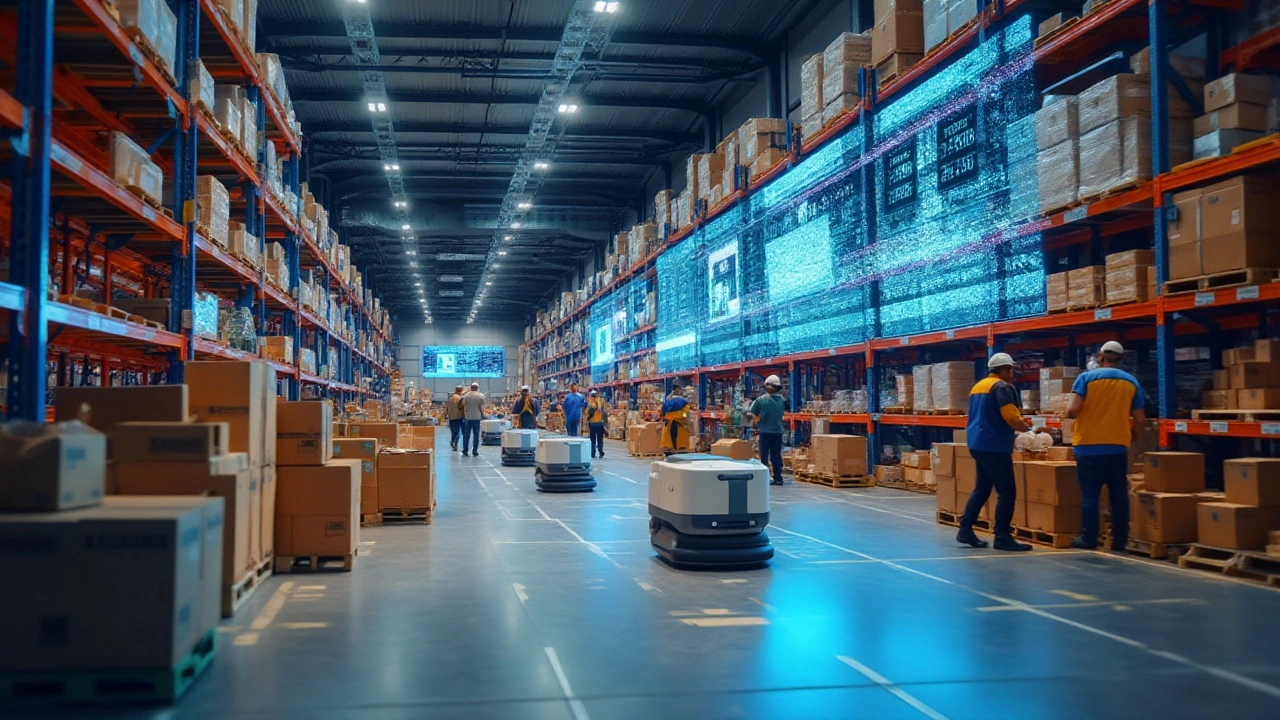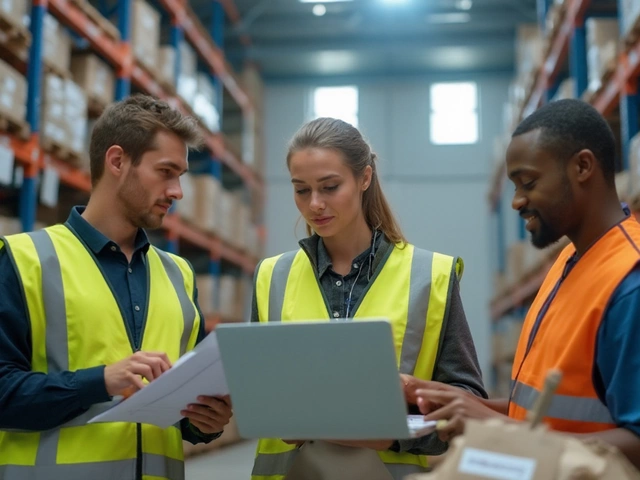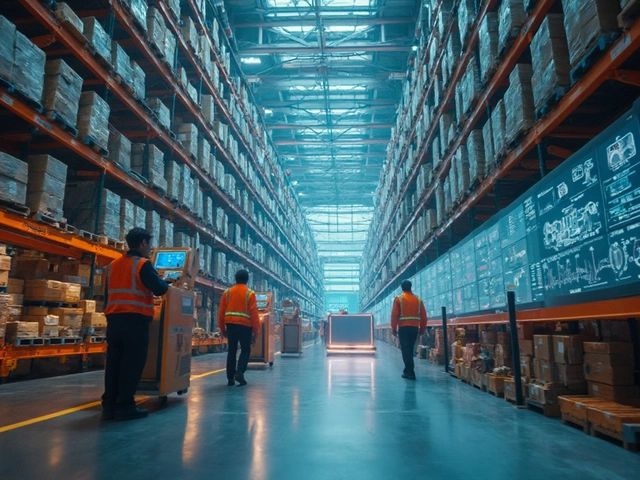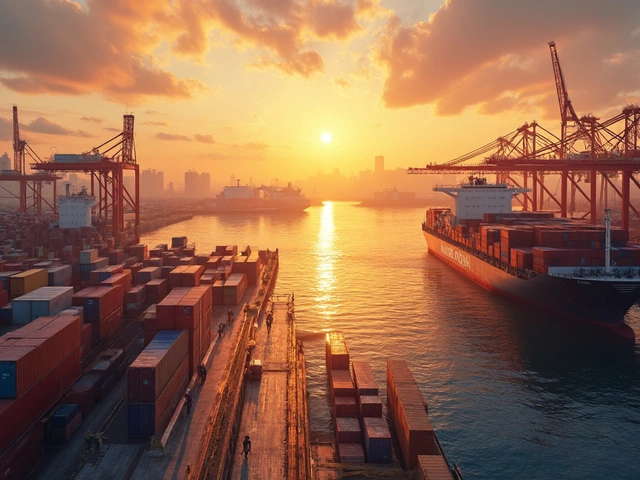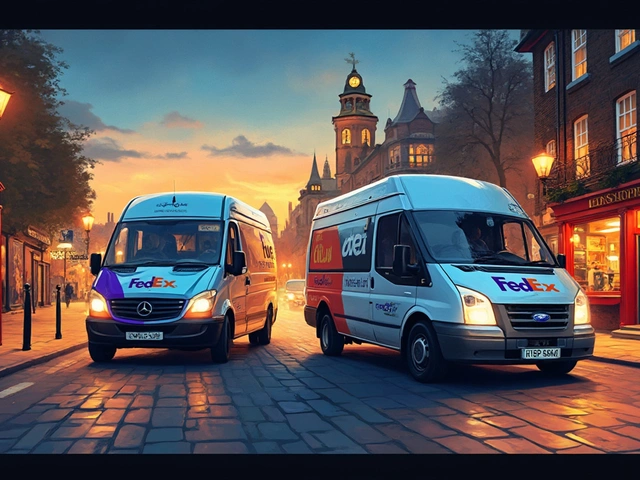The digital revolution has not just transformed how we shop but also how products find their way from businesses to our doorsteps. More than ever, e-logistics is at the heart of e-commerce, driving forward an era where efficiency rules the day. By embracing technology, companies are navigating complex supply chains with newfound agility.
Imagine getting exactly what you want when you want it, and knowing exactly where it is at all times—this seamless experience is made possible through advanced e-logistics systems. With speed and precision becoming the new norms, these systems are what ensure items move swiftly and safely along the supply chain.
More than just speed, it's about creating a memorable shopping experience, from checkout to unboxing, by providing personalized and convenient service. This not only taps into customer satisfaction but also builds loyalty in a crowded marketplace.
As the world shifts focus towards sustainability, e-logistics offers solutions that reduce carbon footprints through smarter routing, eco-friendly packaging, and renewable energy investments. Staying informed on the implications of these changes is more important than ever, as the future of commerce leans heavily on these technologically driven logistics models.
- The Rise of E-Logistics
- Efficiency and Speed in Delivery
- Enhancing Customer Experience
- Sustainability and Future Prospects
The Rise of E-Logistics
The emergence of e-logistics represents a monumental shift in the landscape of supply chain management. Fueled by the explosive growth of e-commerce, businesses have had to become increasingly innovative to keep pace with rising consumer expectations for speed and efficiency. Over the past decade, the methods and technologies underpinning logistics have evolved dramatically, enabling companies to operate on a scale that was previously unimaginable. Automation, data analytics, and artificial intelligence are now integral tools in optimizing every step of the supply chain. Warehouse robots sort and pack orders at lightning speeds, while predictive analytics ensure inventory is always aligned with demand.
Another key driver of this evolution is the necessity to compete in a global marketplace where the end goal is not just to meet expectations, but exceed them.
This shift to digital platforms is also highlighted by the explosive popularity of online shopping, which saw a surge during the pandemic years and shows no signs of waning. With e-logistics, companies are finding they can streamline operations while cutting costs and increasing customer satisfaction—key priorities for any successful business in today's competitive arena. In fact, a report by the International Data Corporation recently revealed that worldwide spending on digital transformation, including e-logistics, is expected to reach around $3.4 trillion by 2026. This staggering statistic underscores the value businesses see in harnessing digital tools to optimize logistics functions.
As more consumers demand faster and more reliable service, e-logistics is becoming a critical component of business strategy. Not only does this mode of logistics offer improved shipping speeds, but it also provides valuable insights into customer preferences and purchasing habits, allowing for unparalleled personalization. As this sector continues to evolve, it is likely we will see even greater advancements in technology and strategy. One industry expert noted,
"The future of logistics will be defined by both speed and intelligence. Those who can adapt to digital frameworks more swiftly will lead the charge."
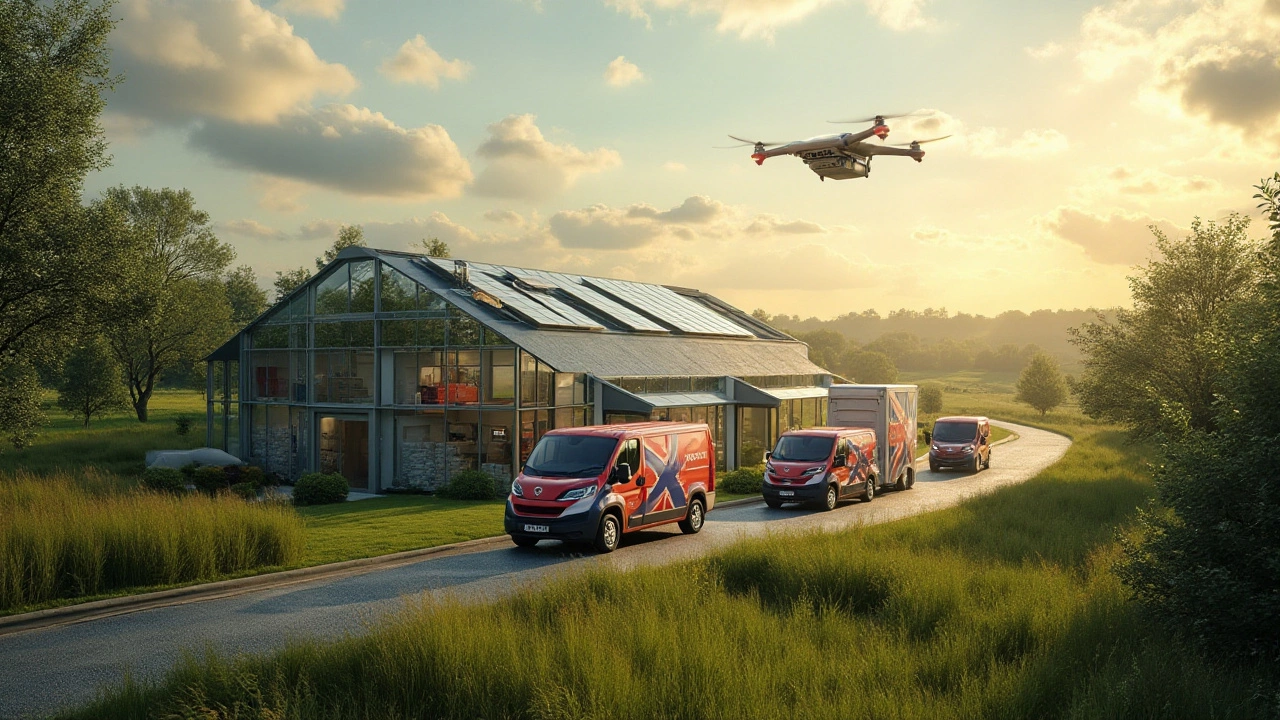
Efficiency and Speed in Delivery
In the world of e-commerce, efficiency isn't just a buzzword; it's an essential part of staying relevant. At the heart of e-logistics lies a promise: to deliver goods swiftly and accurately. The key to unlocking these speedy deliveries is recognizing the power of technology. Modern systems rely on sophisticated algorithms and software that manage the intricate web of supply chains. They calculate not only the fastest routes but also anticipate potential delays, enabling businesses to get their products to customers more reliably and quickly than ever before.
The backbone of this remarkable efficiency is the collection and analysis of data. With real-time tracking, every parcel's journey can be meticulously monitored, and decisions adjusted accordingly. Take the massive fulfillment centers of Amazon, for example. They are not just about size; they integrate cutting-edge robotics alongside human effort to whisk packages through their maze-like interiors in a matter of minutes. This seamless blend of man and machine ensures orders that used to take days now often arrive at a customer's doorstep in just hours.
Additionally, strategies such as local warehousing and intelligent packaging play a crucial role. By situating warehouses closer to urban centers, businesses can significantly cut down on transport times. When packages are cleverly arranged, they make the best use of spatial resources, further enhancing delivery speed. An often-cited quote from Jeff Bezos encapsulates this ethos,
"The most important single thing is to focus obsessively on the customer."This relentless customer focus drives the logistics model, pushing innovation to meet ever-growing demands for speed.
Customers today expect more than just quick delivery; they expect to be in the loop. The integration of GPS and real-time notifications into logistics systems has redefined customer interaction. No longer are we left wondering about a package's location or estimated time of arrival; instead, we receive precise updates tailored to our schedules. Moreover, businesses have leveraged these technologies to make same-day or even hour-specific deliveries more common, turning delivery speed into a competitive advantage.
In an environment where time equates to customer satisfaction, it's not surprising that businesses are perpetually seeking ways to cut down lead times. Technologies like drone delivery, although still in their nascent stage, promise to redefine e-logistics. Companies are already testing airborne methods as a viable solution for delivering light packages across short distances, further bolstering the promise of swift service. To give a snapshot of recent progressions:
- 90% of online shoppers expect their orders to be delivered within two days.
- The use of predictive analytics has decreased shipping times by up to 30% in some sectors.
- Real-time tracking has resulted in a 20% increase in customer satisfaction ratings.
As competition heats up, the drive for swifter, more dependable delivery isn't just about keeping up; it's about shaping future expectations. As e-commerce evolves, the lessons learned through these logistics innovations will continue to have a profound impact on how efficiently goods find their way to us.
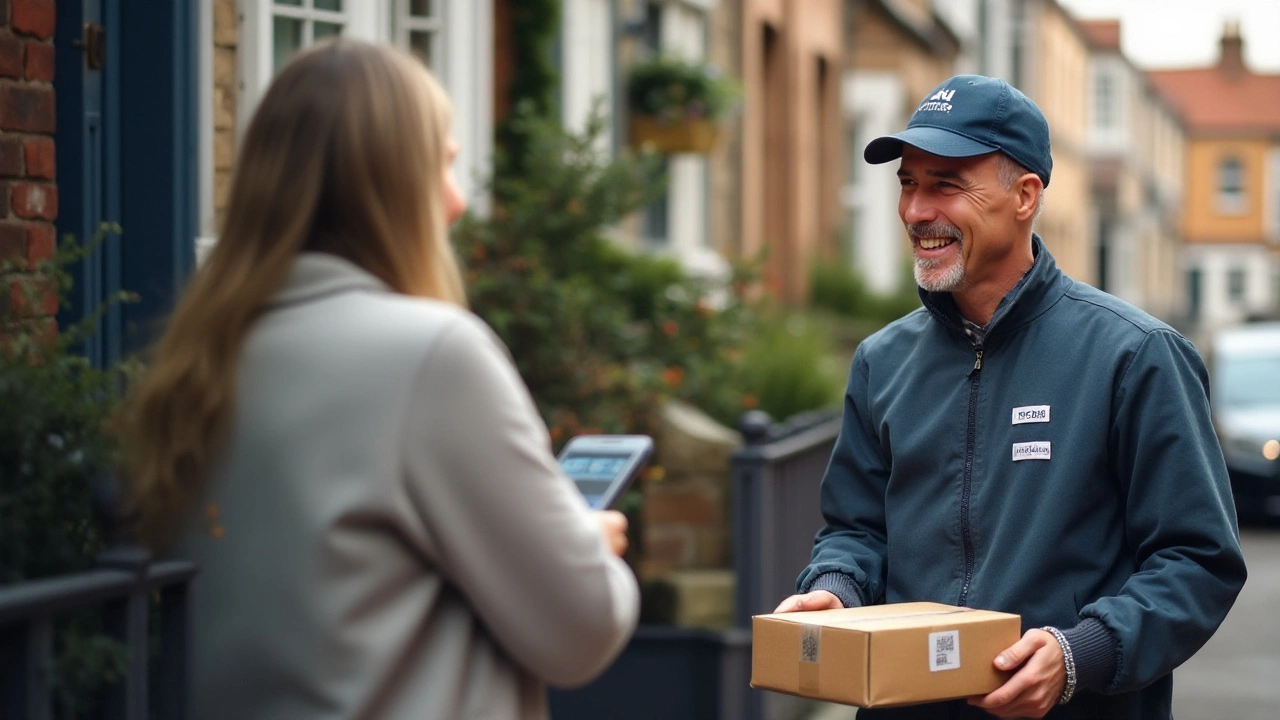
Enhancing Customer Experience
In today's fast-paced e-commerce landscape, enhancing the customer experience is at the forefront of companies' priorities. As consumers become increasingly savvy, their expectations for an engaging, seamless, and personalized shopping journey have intensified. E-logistics plays a pivotal role in meeting and even exceeding these expectations by providing tailored and timely interactions that transform a simple transaction into a gratifying experience. Through the power of advanced technology, businesses can now adapt to customer preferences with a level of precision that was previously unimaginable.
One of the biggest advantages of e-logistics is its ability to enable real-time tracking of shipments. This transparency not only provides peace of mind to the customer, knowing exactly where their package is at any given moment, but it also allows companies to manage expectations through timely notifications and updates. A study revealed that 89% of consumers view these updates as crucial to the overall shopping experience, highlighting the importance of keeping customers informed at every step of the delivery process. By setting proper expectations, businesses can vastly reduce the anxiety associated with online shopping and, as a result, foster greater customer satisfaction.
Personalization is another area where e-logistics shines. By leveraging data analytics, companies are now able to understand customer buying behaviors and preferences more intimately. This rich insight facilitates tailored recommendations and personalized marketing efforts that resonate with the individual. Research suggests that personalized experiences can increase sales by up to 20%, making it a strategic area for e-commerce merchants. This connection extends beyond mere purchase suggestions to include the delivery phase, where options such as preferred delivery times and locations provide convenience that is highly valued by today's consumers.
Improving the returns process is equally paramount to enhancing the customer experience. E-logistics solutions streamline returns management, making it hassle-free for customers to initiate returns through simple steps and minimal effort. A well-managed returns process not only enhances the customer’s post-purchase experience but also builds trust and loyalty, as 62% of shoppers have reported being more likely to repeat purchases when returns are easy. Because of this, businesses can turn a potential negative into a chance for positive engagement, guiding future interactions towards loyalty and retention.
Artificial intelligence and machine learning (AI and ML) are increasingly being integrated into logistics systems to further elevate customer experience. These technologies enable predictive analysis, offering insights into potential delays and allowing proactive communication with customers, effectively managing dissatisfaction by addressing issues before they arise. An article from the MIT Sloan Management Review states,
"AI-driven customer experiences are setting new standards for personalization and convenience in e-commerce logistics, and companies investing in these technologies are reaping significant benefits."Such proactive measures, powered by e-logistics, highlight a forward-thinking approach that puts the customer first and fosters a sense of partnership and reliability.
It's also noteworthy that modern e-logistics ventures are realizing that support is all about accessibility and ease. Offering multiple channels for customer assistance — from chatbots and emails to traditional phone support — ensures that when customers need help, it is readily available. The immediacy and availability of support are particularly critical during peak shopping periods, where a timely resolution can mean the difference between delight and disappointment. By recognizing these touchpoints as key components of the overall experience, companies can differentiate themselves in a competitive market, effectively transforming casual customers into brand advocates.

Sustainability and Future Prospects
In today's world, where environmental awareness is shaping consumer behavior and corporate strategies, e-logistics is proving to be a game-changer in promoting sustainability. Companies are increasingly realizing that eco-friendly practices are not just optional, but essential for their long-term viability. By integrating environmental considerations into logistics, businesses are addressing the growing demand for green solutions in e-commerce.
One of the primary ways that e-logistics contributes to sustainability is through optimized transportation routes that significantly cut down on fuel consumption and emissions. Delivery fleet management systems use sophisticated algorithms to plan the most efficient paths, which not only save costs but also reduce the carbon footprint. Innovations such as electric delivery vehicles or partnerships with local courier services offering bicycle deliveries are becoming more common. These strategies help cut emissions, contributing positively to the environment.
Packaging is another critical area where e-logistics promotes sustainability. Companies are shifting towards biodegradable and reusable packaging materials which augment their commitment to eco-friendly processes. This change not only supports waste reduction but also aligns with the preferences of a growing environmentally-conscious customer base who prefer brands that mirror their values. The adoption of smart packaging technology, such as packaging that adapts to the shipment's sensitivity, ensures product safety while minimizing material use.
Additionally, data analytics within e-logistics provide insights into order patterns and inventory needs, allowing companies to better predict demand and supply alignment. This reduces unnecessary stockpiles that could lead to wastage and obsolete inventories. Businesses leverage technology to balance supply chains efficiently, minimizing the environmental impact of excess inventory and unsold goods.
Looking forward, the prospects for e-logistics continue to expand with advancements in technology. The integration of Internet of Things (IoT) devices and blockchain provides transparency and accountability within supply chains, further driving sustainable practices. As more companies embrace these technologies, the increased efficiency and reduced environmental impact solidify their standing as responsible players in the supply chain.
"Investing in sustainable logistics is not merely an ethical choice; it's a business imperative," says a report by McKinsey & Company, highlighting the inevitable rise of ecological considerations as a central theme in logistics strategies worldwide.
With these sustainable solutions, forward-thinking businesses are carving the path to a future where logistics benefits are aligned with ethical and environmental considerations. As we move ahead, it is certain that the increasing customer scrutiny will ensure that sustainability in e-logistics becomes a cornerstone of competitive advantage, ultimately leaving a lighter footprint on the planet.
